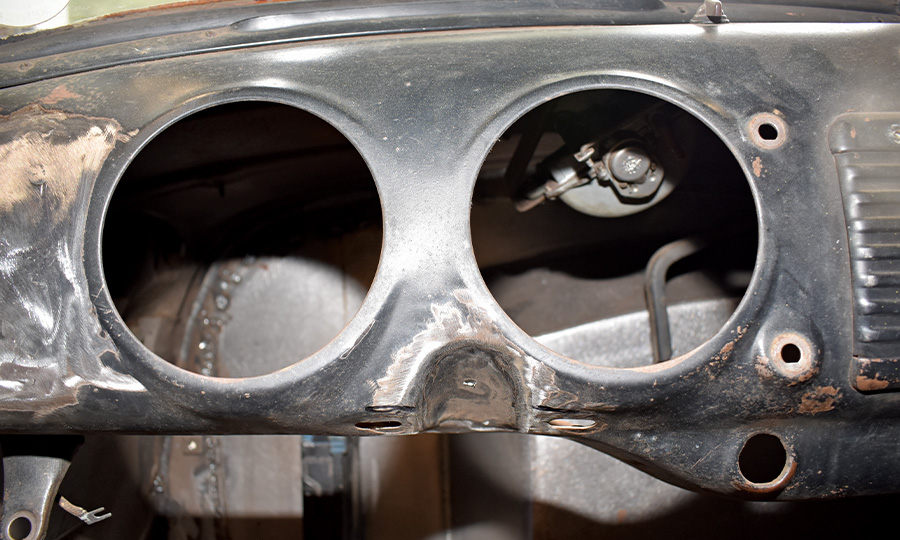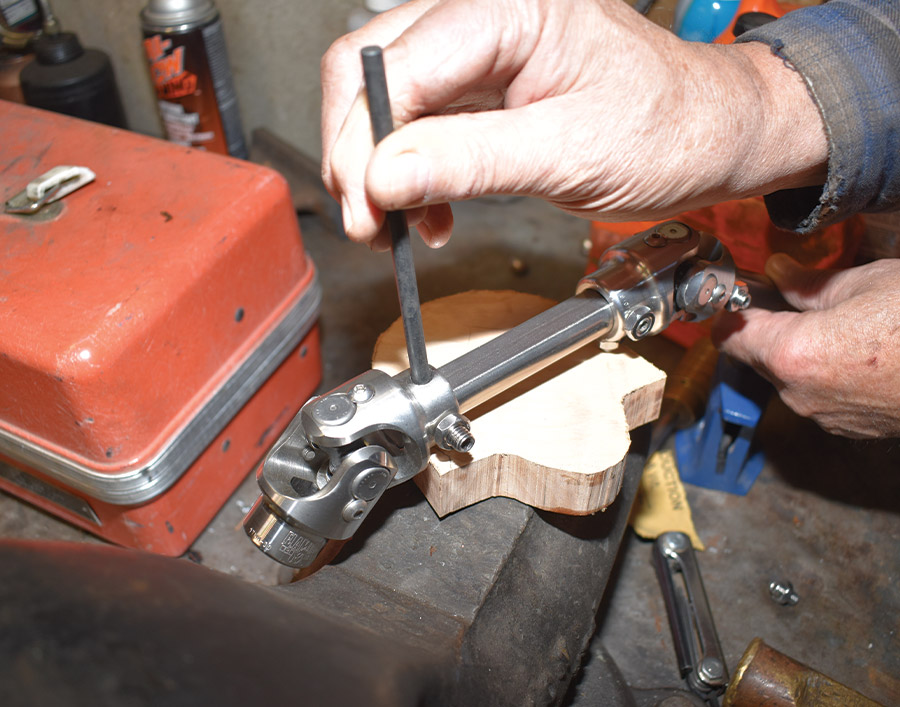
 Tech
TechInTheGarageMedia.com

 Images by THE AUTHOR
Images by THE AUTHORne of the most difficult things for someone to admit is that after investing time and money in a project that the completed project is no fun to drive. The fact is that even the coolest-looking trucks seldom see the road if the steering wheel placement isn’t comfortable.
When installing a steering column there are several considerations, certainly appearance is one of them. Many years ago steering columns were often sourced from wrecking yards. Those of us who have been around for a while can remember the GM car and truck tilt columns that were so ugly the bottom portion was hidden by carpet or upholstery material. Of course whenever steering components are involved, safety is a concern as well. Years ago, if U-joints were necessary to connect the steering column to the gear there wasn’t much to choose from. We’ve seen U-joints used that were designed for industrial applications, power takeoffs, import car applications, and even some from military surplus stores (most of which were for light helicopter tail rotor driveshafts). Many of these installations were sketchy at best and dangerous at worst.
Thankfully, using junkyard steering parts is no longer necessary as all-new components are available from Flaming River. They offer a complete line of fixed and tilt columns, with or without shifters and with or without ignition switches. Made in the USA, all Flaming River columns are made from 304-grade stainless steel and are available in paintable mill finish, highly polished, or black powdercoated. Column lengths from 17 to 45 inches are available and shafts come in 1-inch Double D as well as 1-inch 48-spline and 3/4-inch 36-spline—basically there’s a Flaming River column for any application. In the case of the 1952 Chevy pickup shown here, we used a mill finish, 32-inch floor shift tilt column (PN FR20006).
As is often the case, to connect the steering column in our truck to the Corvette rack-and-pinion steering gear three U-joints were required. Be aware that when a steering system contains three U-joints, a support bearing is necessary to keep them from “whipping” (double U-joints and vibration reducers are considered to be two, so at one end of a shaft with a single U-joint at the other requires a support bearing).
Although pinning and welding U-joints to shafts was once common, the preferred method is to use splined or double-D (DD) shafts. Both are strong and safe—splined shafts come in various lengths that can be shortened an inch on each end if necessary. When using splined shafts it is necessary to “clock” the U-joints so the yokes are aligned. DD shafts also come in various lengths and are easily cut to fit. Aligning the U-joints on DD shafts isn’t an issue as they only fit one way.
When installing a steering column the position of the steering wheel is critical—if the steering wheel is too far away it puts a strain on the driver’s shoulder muscles; too close and it strains the wrists. Long distance GT racers have found that positioning the steering wheel so their arms are at a 40- to 55-degree angle is ideal to reduce fatigue.
Another often-overlooked consideration when positioning the steering column is the “line of sight” from the driver seat. There are some automotive designers who suggest that the steering column of a performance vehicle should be very slightly angled so as to point at the center of the lane out in front of the vehicle, in other words it follows the driver’s line of sight. Although it is a subjective issue, some drivers claim a vehicle that has had the steering column pointing off to the left of the line of sight is disconcerting. With the steering column, shafts, and U-joints in place, the finishing touch was to add a downsized reproduction 1952 Chevy pickup steering wheel from Speedway Motors and an original-style horn button from Chevs of the 40’s.
When installing steering components safety and appearance are obviously important considerations, but always mock up the steering wheel and column make sure you end up with a truck you really want to drive.






















 SOURCES
SOURCES